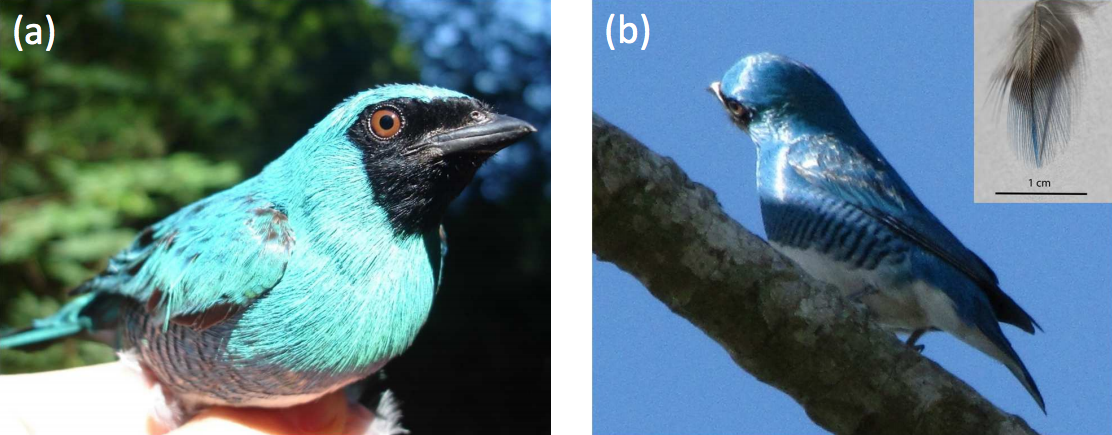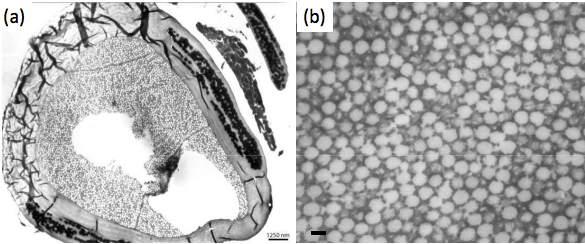What Color is this Bird?
August 24, 2018
Turquoise? Cobalt? It depends on your perspective...

(Click image to enlarge)
Image Credit: Christian D'Ambrosio, et al. Physical Review E
...and not in a figurative way! Photographed from one angle, the Swallow Tanager appears turquoise—but from the other side, it has a deep, sky-blue hue.
What's Going On Here?
Like many birds and insects, the Swallow Tanager doesn't derive its color from pigment molecules; it has what's called structural coloration. This is a property that emerges when an ordinarily colorless substance—in this case, the keratin of the bird's feathers—has a nanoscale structure that lets it reflect, scatter, or absorb certain wavelengths of light more efficiently than others. Butterfly wings, for example, are covered in stacks of flat, reflective structures that cause thin-film interference to enhance the intensity of reflected blue light, while diminishing all other colors.
These birds' feathers, on the other hand, use an entirely different kind of structure, on display in the tunneling electron microscope image below.

Image Credit: Christian D'Ambrosio, et al. Physical Review E
At left, you can see a cross-section of a "barb" on the bird's feather; at right is a magnified image of the interior's texture. The magnificaion reveals that the barb is filled with a spongy network of spherical air pockets, each only a few hundred nanometers in diameter. These pockets are embedded in a matrix of keratin, the material that makes up most feathers—as well as your hair and fingernails!
Any time light passes through the keratin into an air pocket, and then back into the keratin, a portion of it is reflected at the boundary. Because the spheres are all nearly the same size, and just about the same distance from one another, photons of a certain color "add up" when reflecting, while others cancel out. Exactly which colors add up, and how strongly, depends on how many layers of spheres the light is traveling through—so the bird can appear as different colors from from different angles!














